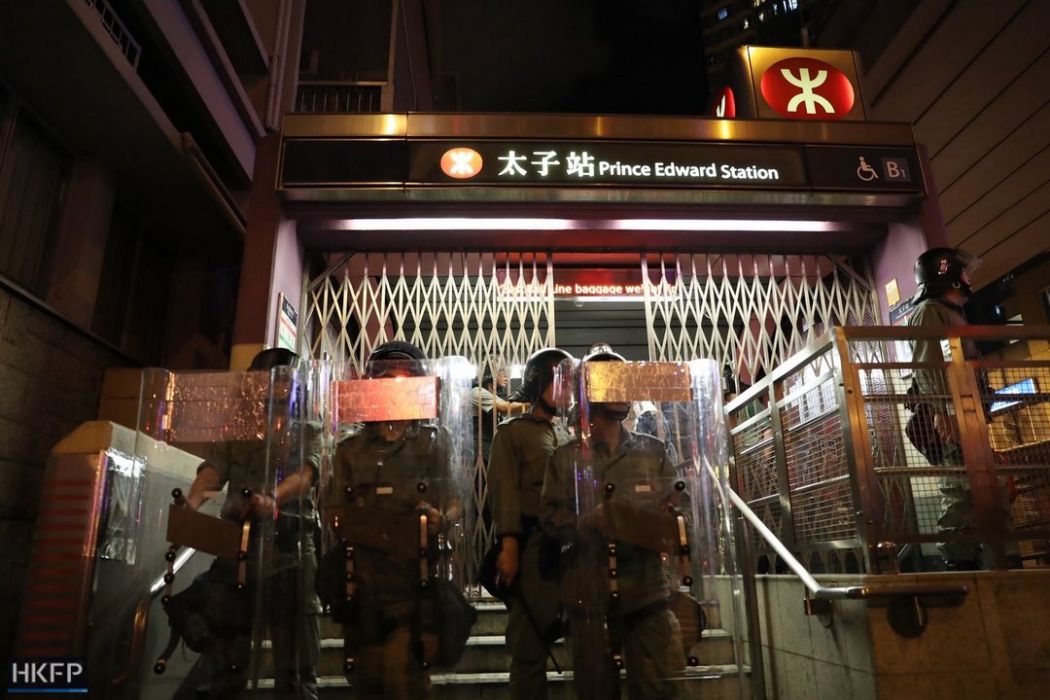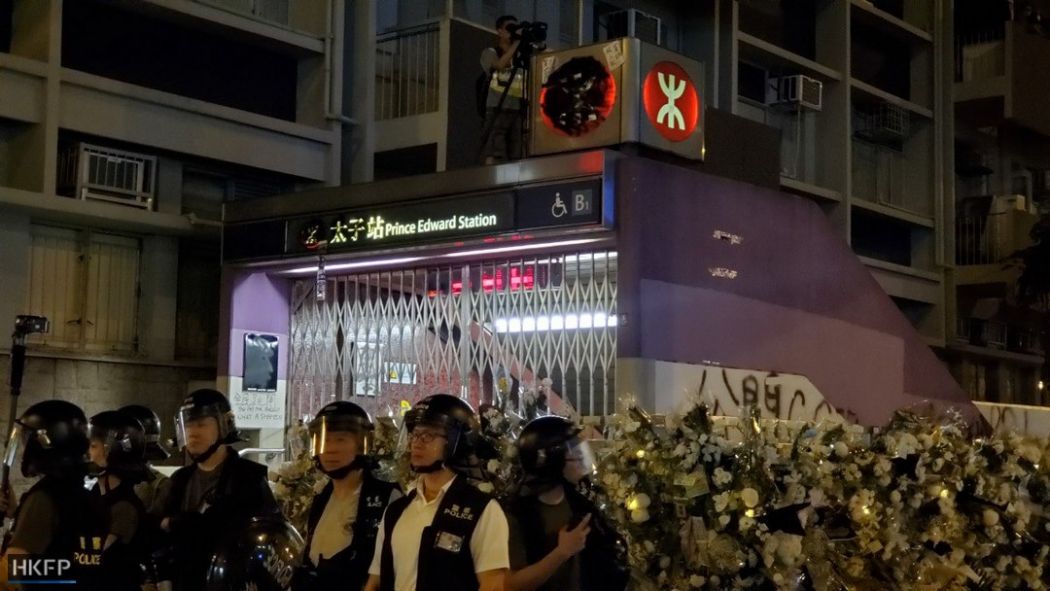It should have been a simple, ho-hum procedure. Instead, the selective release of critical CCTV video footage from Prince Edward MTR Station on the night of August 31 sparked yet another political crisis for the embattled Hong Kong government, police force, and MTR Corporation.
Just before 11 pm on August 31, riot police, including members of the Special Tactical Squad “Raptors”, stormed the Prince Edward subway station in Mong Kok. During the ensuing chaos, riot police were filmed by journalists rushing into subway carriages and viciously and indiscriminately assaulting passengers with batons and pepper spray, leaving many passengers cowering and bleeding.

As damaging as the footage of the violence that night was to the public trust, it would only be the beginning of an ongoing public relations disaster for the authorities.
Not long after riot police stormed the trains, the MTR closed Prince Edward station, denying access to journalists and first aiders. Initial reports from first responders suggested that ten individuals were injured as a result of the clashes with police that night.
However, that number was later revised to seven, stirring up rumours online that the MTR had assisted the police force in covering up the true number and nature of casualties from that night. Online rumours alleged that at least three people were beaten to death by police.
The MTR Corporation has been under significant public pressure to release the full CCTV footage of the August 31st incident, but aside for several still-captures, has thus far refused to do so. In the interim, despite multiple public denials by authorities that anyone died during the incident, citizens have continued to leave memorials and white flowers outside the station entrance in mourning of the “missing” protestors.

Public trust in the police force, the Lam administration, and the MTR Corporation continue to be bogged down the perception that they are hiding the truth from citizens by not releasing the full CCTV footage.
This ongoing political crisis could have been averted had the public’s right to information been respected and the full video footage from MTR cameras released upon request at the outset.
Access to information laws
The Prince Edward incident is an indictment of the fatal flaws that exist within the current Access to Information regime in Hong Kong. This issue is not merely a problem for legal and policy experts, but rather an issue that goes directly to the heart of what citizens should reasonably expect from their government in a fair and just society.
Hong Kong’s existing Access to Information regime is not spelt out in law, but rather exists as an administrative policy since the previous colonial government introduced the Code on Access to Information in March 1995.

While the system has generally been efficient, there are various glaring problems with this framework, including the fact that the code has no legal force and a refusal to disseminate relevant information to the public would, therefore, be very difficult to challenge in court.
In December 2018, the Access to Information Sub-Committee of the Law Reform Commission released a hefty consultation paper recommending new legislation to provide a clear legal framework, including penalties for those who alter, erase, destroy or conceal records.
Curiously, the MTR Corporation is missing from the list of organisations to which the existing Code applies, although related organisations such as the Transport and Housing Bureau, Transport Department, and the Kowloon-Canton Railway (KCR) Corporation are specifically listed in the report’s Annexes.
This omission is directly at odds with Article 16 of the Basic Law and Article 19 of the International Covenant on Civil and Political Rights – both of which are cited in the consultation paper.

Importantly, the UN Human Rights Committee has interpreted Article 19 to include “a right of access to information held by public bodies” and that these public bodies include “other entities when such entities are carrying out public functions”, as in the case of the MTR Corporation.
In spite of the Hong Kong government’s legal obligations to respect the right of access to information, the MTR’s response to public and media pressure to release the CCTV footage has been both arbitrary and unsatisfactory, further illustrating the need for a robust Access to Information law.
The most common legal test for whether information should be provided upon request is a balancing test of whether the public interest in disclosure outweighs any harm or prejudice that may result from that disclosure.
In this case, it is hard to imagine any information in Hong Kong that is currently of greater public interest than the August 31st Prince Edward footage, as it pertains to alleged criminal offences, human rights violations, and miscarriages of justice on the part of state authorities.

On the other side of the ledger, the MTR has offered tepid and weak justifications for refusing to release the CCTV footage, citing vague “privacy” issues and that the CCTV footage does not show a “complete” picture. In an incredible about-face, the MTR then took it upon itself to cherry-pick 21 stills from the CCTV footage to recreate their version of the story for the public in a press release.
With respect, it should not be the role of departments and agencies discharging public functions to be the convenient arbiter of what information should and should not be provided to the public. A government that purports to respect civil and political rights must also respect the public and media’s right to know relevant information that is of public interest.
The CCTV footage should be released immediately and legal reform implemented so that such a devastating erosion of public trust in government agencies and public bodies does not occur again.
Hong Kong Free Press relies on direct reader support. Help safeguard independent journalism and press freedom as we invest more in freelancers, overtime, safety gear & insurance during this summer’s protests. 10 ways to support us.

